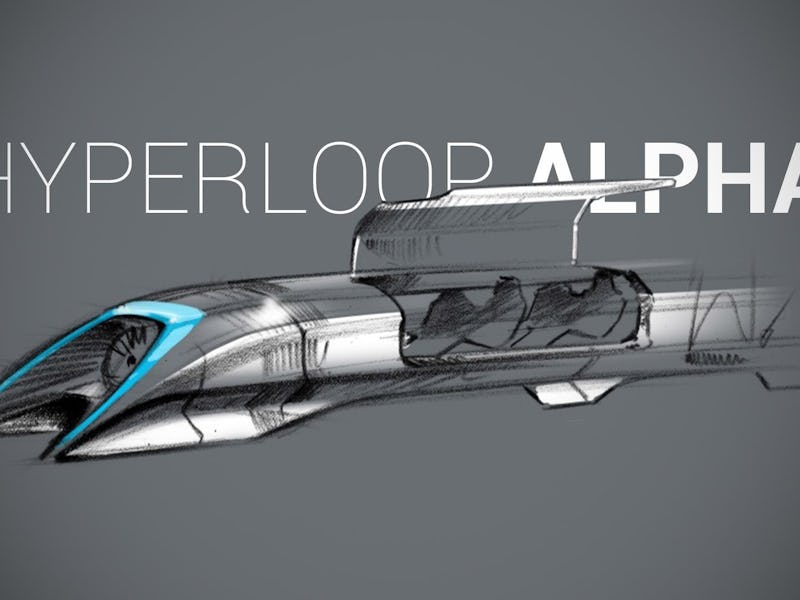Elon Musk's Hyperloop Is Getting a Test Track in California
The 'closest thing to tele-transportation' is another step closer to reality.

Looks like the Hyperloop is speeding towards becoming a reality. This week at London’s Transport to the Future event, the folks behind SpaceX’s Hyperloop Transportation Technologies announced that construction on the initial testing facilities will begin in just two to three weeks and will take about 32 months to complete.
The test track will be built in King County, California, about halfway between L.A. and San Francisco — two of the cities that Tesla and SpaceX founder Elon Musk plans to unite with the Hyperloop. According to Google Maps, traveling that 400-mile distance via car takes about six hours. The Hyperloop could lop a whopping five-and-a-half hours off that.
Chief Operating Officer at HTT, Bibop Gabriele Gresta, told Dezeen at Transport to the Future that the Hyperloop will change the way we think about travel: “It is the closest thing to tele-transportation.”
Hyperloop travel tubes will mostly be straight in order to minimize the burdens on the human body.
With Hyperloop cars slated to travel at up to 760 mph, it looks like Gresta isn’t overstating things. But what would it be like to travel at 760 miles per hour? Likely, pretty terrible for the human body (and potentially a “barf ride,” according to transportation writer Alon Levy). However, early passengers on the Hyperloop test track won’t be subjected to any speeds over 160 mph. That force amounts to about 5 Gs, which is basically like experiencing what Formula One drivers feel on the race track.
HTT plans to use the $150 million King County facility in Quay Valley to test the tube-based transportation system that runs off of wind, solar, and kinetic energy. Gresta estimates that 10 million passengers will make their way through the test-version of the Hyperloop. Travelers will embark on their journeys in pods propelled through the tubes thanks in part to vacuums and magnets. Any excess energy from the Hyperloop system will be resold back to the grid.
A cross-sectional look at how passengers will probably travel in the Hyperloop.
The project has been in the works since 2013, when Musk released the original Hyperloop project white paper. While there are big steps being taken towards uniting L.A. and San Francisco with this technology, Gresta notes that the first fully functioning Hyperloop will probably not be built in the United States because of all the hoops the company has to jump through here — restrictions that aren’t necessarily present in other countries.
The Hyperloop is also competing with the $68 billion, partially government-funded California bullet train which pales in comparison to the Hyperloop — on paper at least. Musk has publicly scoffed at the idea of the California high speed rail project, writing on the Tesla Motors blog in 2013: “How could it be that the home of Silicon Valley and JPL — doing incredible things like indexing all the world’s knowledge and putting rovers on Mars — would build a bullet train that is both one of the most expensive per mile and one of the slowest in the world?”
Ouch. One thing’s for certain in the race to high-speed ground travel: Not everyone is taking the metaphorical high road.
While we wait for construction to begin on the Hyperloop test facilities, here’s a look at some of the project renderings:
A proposal for the Quay Valley test facility about to be built in a matter of weeks.
A closer look at the proposed solar panels attached to the tubes as just one of the Hyperloop's power sources.